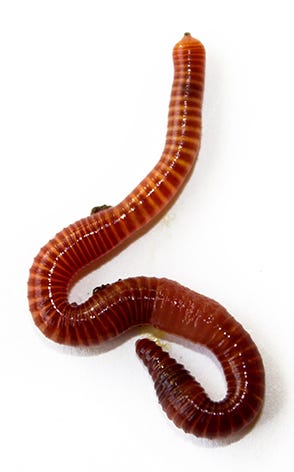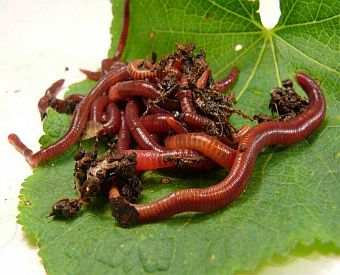Some Of Red Wiggler Express
Some Of Red Wiggler Express
Blog Article
Getting My Red Wiggler Express To Work
Table of ContentsThe 10-Minute Rule for Red Wiggler ExpressNot known Facts About Red Wiggler ExpressThe 30-Second Trick For Red Wiggler ExpressSome Known Incorrect Statements About Red Wiggler Express The Definitive Guide for Red Wiggler Express
And the growing Red Worm populace? Also in the heap that was established up directly in front of yard composters with existing Red Worm nests.
Lots of selections, consisting of Red Wigglers, European Nightcrawlers, and Lumbricus types were brought over from the European continent. But here's the thingNative or not - and as skilled as they are at being able to make it through in a wide-range of atmospheres and problems -. In other words, they are even more likely to socialize in any kind of energetic composting systems you have actually established up, than they are to roam off and start spoiling the environment.
Roots require oxygen for respiration and rely on smooth airflow within the soil to thrive. However, when it rainfalls, soil can end up being saturated with water, minimizing the oxygen offered and preventing nutrient absorption - Red Wiggler Express. To maintain an optimum balance, the soil has to permit water to drain effectively, leaving adequate space for air to sustain root health and wellness
All About Red Wiggler Express

When it involves worms for composting, what enters your mind? If you were an earthworm breeder, dealer, or ordinary gardener, after that you would certainly understand that red wiggler worms are the ideal worms for vermicomposting. For more information regarding these planet marvels, gone through several of the red worm realities below.
(https://alivelink.org/Red-Wiggler-Express_301885.html)Yet if they stretch their bodies, you'll have the ability to see the stripes on their skin. When elevating worms such as red wiggler worms, you ought to have the ability to know just how to make excellent use of them. When you have the ability to keep and care for their habitat well, and likewise feed them the appropriate kinds of organic wastes, then they'll have the ability to create nutrient-packed and quality-rich worm castings for you (additionally recognized as worm poop or compost).
The 9-Minute Rule for Red Wiggler Express
So, what do worms consume? Well, these red wriggler worms can be fed with cooking area scraps and yard wastes. So, any worn out natural things will certainly simulate vegetable and fruit peels, crushed egg coverings, used tea bags, coffee grounds, grass trimmings, completely dry fallen leaves, and others. Yet make certain not to feed them foods items that are oily, citrusy, or has meat or dairy products in them. Where To Buy Worms.

This behavior makes them appropriate forever in worm containers, compost heap, and other constrained spaces where organic waste is abundant. Creating an optimum setting for red wigglers calls for a thoughtful technique. Take into consideration the following important components to care for red wigglers at home and guarantee their wellness: Utilize a bedding of shredded paper or cardboard.

Include a handful of completely dry, shredded paper if the container comes to be also wet. Undoubtedly, they do! Red wiggler worms duplicate by laying tiny, lemon-shaped eggs in protective cocoons. These cocoons are generally deposited in the bedding and hatch right into baby worms within a couple of weeks. The rapid reproduction cycle of red wigglers is just one of the factors they are favored for vermicomposting.
The 45-Second Trick For Red Wiggler Express
Their versatility and durability have made them a popular option for vermicomposting in numerous areas worldwide. Yes! They can make it through from a range of 32F to 90F. They are incredibly adaptable animals. Consider safety measures for extremely severe temperatures such as: Protecting the worm container with layers of straw or leaves.

When looking after your red wigglers it is necessary to bear in mind to: 1) K.I.S.S (Keep it Simple) and 2) everything in small amounts. These regulations use to feeding your compost worms, sprinkling your worm containers, and nearly whatever else associated with caring for them. Simply bear in mind - you can constantly include more food later (but it's tough to eliminate feed once it's been included in a bin!).
Due to the fact that I fed the red wigglers and garden compost worms also much, they weren't able to keep up and over time the older food went leftover and produced anaerobic conditions that killed the worms. Right here're the 6 gold policies for how usually and exactly how much to feed your worms: Rule # 1: Moderation!
Our Red Wiggler Express Statements
Leftover food will lead to anaerobic problems that will kill your online worms. It is ok to sprinkle a little of their original bedding (which must already be in the container) over the food, but the food ought to never be hidden and should be visible to your eye. Guideline # 5: See policy # 1! Regulation # 6: After the very first feeding, feed the worms 1/3 to 1/2 of their weight.
Report this page